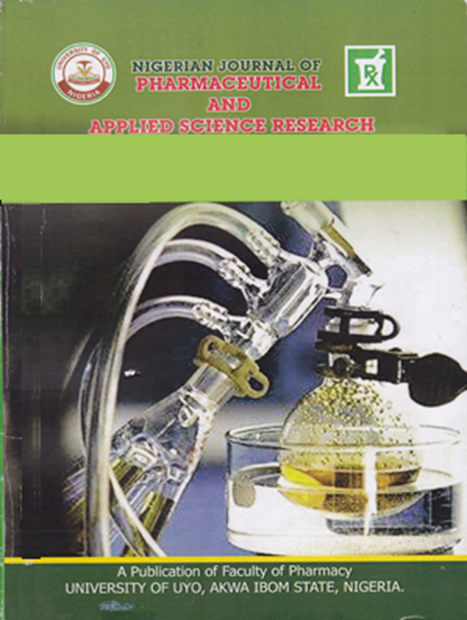Assessment of Heavy Metals in selected Medicinal Plants in Bayelsa State, Nigeria
Contenu principal de l'article
Résumé
Background: The study evaluated the concentration of some toxic heavy metals in medicinal plants used widely in traditional medicine in Bayelsa State. The leaves of six medicinal plants (Stachytarpheta jamaicensis, Justicia secunda, Cleome viscosa, Ipomoea aquatica, Ipomoea cairica and Solenostemon monostachyus) growing their natural habitats were collected and analyzed for seven heavy metals.
Methods: The concentrations of the heavy metals (Cadmium, Lead, Arsenic, Chromium, Zinc and Mercury) were determined using standard procedures and Varian Spectra A100 Atomic Absorption Spectrophotometer.
Results: The results indicate the plants had differential accumulation of the heavy metals that were mostly within the permissible concentration thresholds set by the WHO. Lead significantly accumulated in all the plant species.
Conclusion: The need for constant monitoring, and collection of medicinal plants from an unpolluted area or areas with minimal contamination is essential and highlighted.
Téléchargements
Renseignements sur l'article

Cette œuvre est sous licence Creative Commons Attribution - Pas d'Utilisation Commerciale - Pas de Modification 4.0 International.
Références
Hussein, R. A. and El-Anssary, A. A. (2018) Plants secondary metabolites: The key drivers of the pharmacological actions of medicinal plants. In: Builders PF, editor. Herbal Medicine. London: IntechOpen
Swamy, M. K. & Kumar, A. (2022) Phytochemical Genomics: Plant Metabolomics and Medicinal Plant Genomics: Springer Singapore
Ganaie, H. A. (2021) Review of the active principles of medicinal and aromatic plants and their disease fighting properties In: Tariq Aftab and Khalid Rehman Hakeem (eds) Medicinal and Aromatic Plants Expanding their Horizons through Omics Academic Press London.
Kumar V., Srivastava S., Chauhan R.K., Thakur R.K. & Singh J. (2017).Heavy metals and microbial contamination of certain leafy vegetables grown in abattoir effluent disposal province of Saharanpur (Uttar Pradesh), India. Archives of Agriculture and Environmental Science, 2(1): 36-43.
Khan S., Cao Q., Zheng Y.M., Huang Y.Z., Zhu Y.G., (2008). Health risks of heavy metals in contaminated soils and food crops irrigated with wastewater in Beijing, China. Environmental. Pollution. 152(3), 686-692
Dwivedi S.K. & Dey S. Medicinal herbs: A potential source of toxic metal exposure for man and animals in India. Archives of Environmental Health (2002);57:229?31
World Health Organization –WHO (2008). Quality control methods for medicinal plant materials. WHO Geneva Switzerland available at http://whqlibdoc. who.int/publications/2008/9241545100.pdf
Association Of Analytical Chemists -AOAC (2000) Official Methods of Analysis 7th ed. Association Of Analytical Chemists International
Osioma, E.1, Iniaghe, P. O., and Chibogu, I. F (2018) Evaluation of Heavy Metals Content in Soil and Talinumtriangulare from Kolo Creek, Bayelsa State, Nigeria Mambilla: Journal of Sciences and Environment, 5,. 1: 26-32
Nwankwoala, H.O.; Udom, G.J. & Ugwu, S.A. (2011) Some heavy metal investigations in groundwater sources in Yenagoa, Bayelsa State, Nigeria [39]


